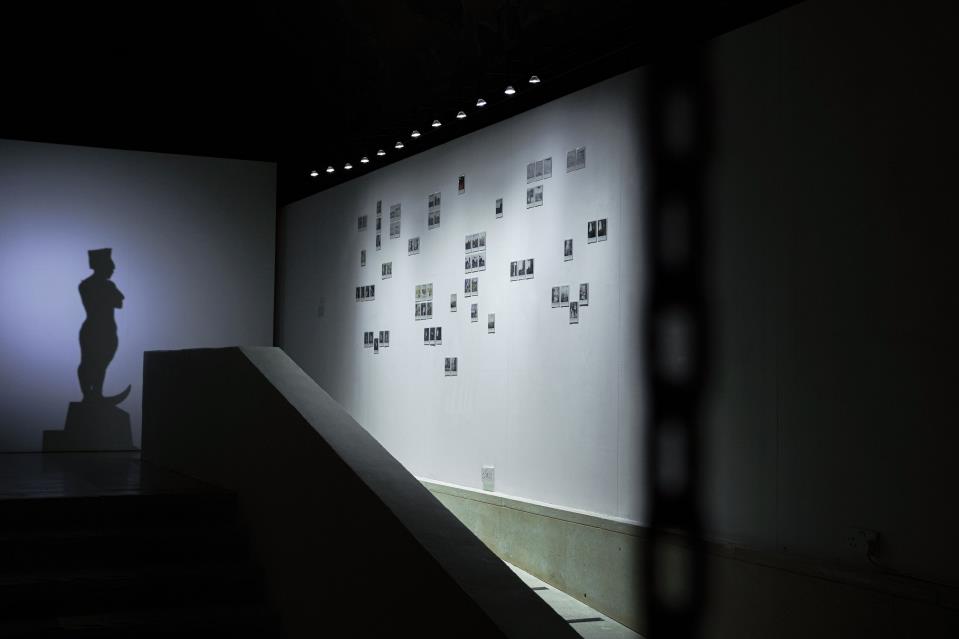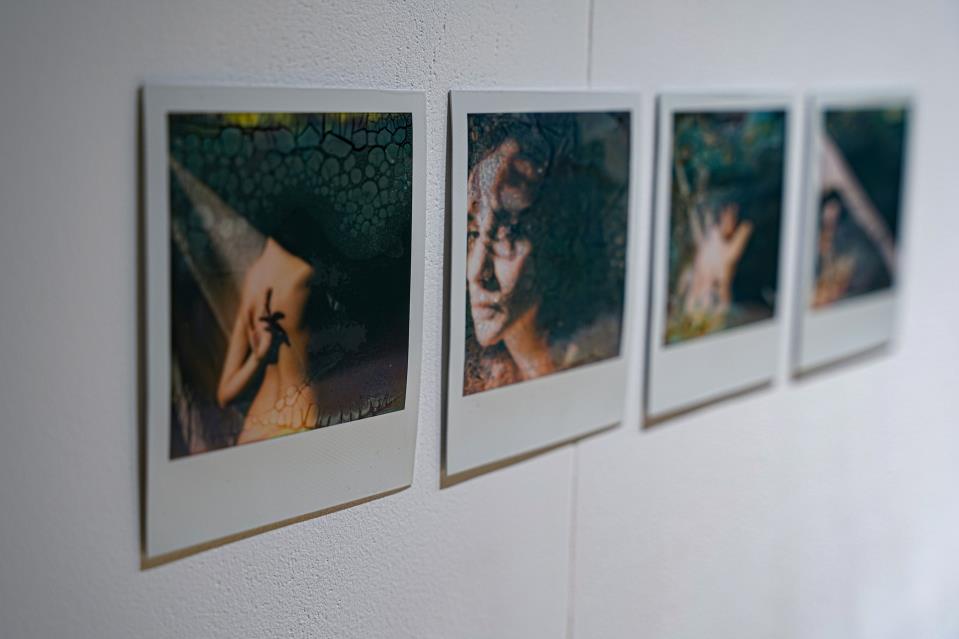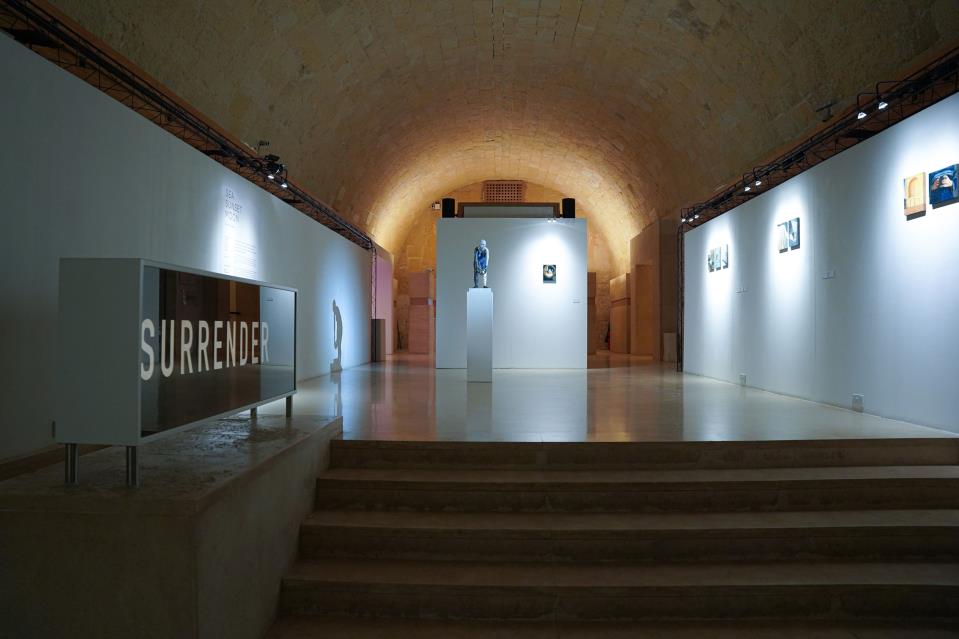Sea Sunset Moon. Let's focus on the first portion of the exhibition's title. The selection almost seems romantic at face value but I would like to hear your own rationale, why choose these three elements to frame the exhibition?
Sea Sunset Moon is an exploration of solitude, melancholia, shifting time and shifting spaces. As symbols, the sea, the sunset and the moon have accumulated around themselves a dense web of associations which make them the perfect metaphorical centres for an exploration of these themes.
As islanders these three forces of nature also form the horizons which constitute the limits - both physical and conceptual - of our collective experience. There is an ethnographic component to the research behind Sea Sunset Moon where through interviews and conversations I collected people's experience of solitude, melancholia, shifting relationships etc., especially within the context of the pandemic. The universality of the sea, sunset and moon symbols have acted as a way of accessing and unifying this pool of experience, before drawing it into the project and artistic work.
Interesting that you also mention romance. The phrase sea, sunset, moon comes from something someone who is no longer around told me. The challenging entanglements with the ever-absent "other" are very much part of what I am trying to delve into. Over and above the pandemic, this past year has been rather turbulent for me personally, and all of that seeps into my work, which is an extension of the attempt at reconciliation. The question then becomes "at what point does this become creative and are there any universal lessons which can be extracted from personal experience?"

In your brief for this exhibition, you made reference to, as you call it, the 'double bind' between aloneness which is etymologically akin to 'wholeness' and solitude which stems from the Latin 'solitudinem' which denotes desolation. Why did you choose to bear out this relationship within this exhibition?
The etymology of the word provided a good starting point for an examination into in-between spaces, while at the same time containing the potential for creatively overcoming itself. The semantics of solitude is instructive in that it contains both the acknowledgement of pain, as well as an invitation to transform that pain into knowledge and understanding.
This concept already exists in the archetype of the hero's journey - think Ulysses, Jonah, Jesus and so on - where suffering builds into the transformation of material conditions. Can the hero's journey through solitude tell us anything about what we are currently going through as a nation? What does it mean to be solitudinous, to occupy liminal spaces, within the contemporary moment?
The double bind between suffering and the apotheosis of that suffering into creativity and higher understanding is something which I find supremely interesting and which is applicable in a very real way, especially within the context of our shores and within the space of the pandemic.

To revert back to the exhibition's title, the second portion of it marks 'variations on solitude'. An obvious way in which this is observed is through the fact that this is a collective exhibition showing a myriad of personal artistic perspectives. Are there any other ways in which these 'variations' will be engaged?
As you say, this project has culminated in a collective and multi-media exhibition, so the artist's own variations of solitude and liminal spaces have been crucial. However, I think it is supremely important for the exhibition to have its roots in the wider collective pool of experience - art shouldn't exist in a vacuum - and it is for this reason that I spent the first phase of creative development carrying out ethnographic research on the general public, with the intention of collecting and curating ordinary people's experiences. These are another set of solitudinous variations which the artists have responded to and which were folded into the exhibition.
Ultimately what has been developed out of all this is an active-creative variation to solitude, melancholia and the liminal spaces which we pass through in our day to day lives, both at the behest of the pandemic and also more generally.

Based on the brief and past exhibitions, poetry seems to be an element that goes hand in hand with your personal curatorial style. Will you be integrating a literary element within this exhibition? If so, how do you feel it will contribute to the narrative of the exhibition?
Most of my inspiration is in fact drawn from poetry. The conceptual and technical freedom in the method of poetry is immensely inspiring and it typifies a non-rational and non-logical method of meaning which I hope to extend into my curatorial practice. Poetry provides the first images, or concept-fragments, which I then build around, present to the artists and generally incorporate into the whole process of research and production. This is very much the case with the current project and poetry featured in my curatorial brief and provided the starting point for the artists themselves. It's all about images and feelings. There is also a literary element to the exhibition design itself, and some literary auxiliary events, such as poetry readings and writers talks.
Another literary element is the catalogue booklet. In it I have two essays which unpack the concept of loneliness and its contemporary manifestations within the context of the artworks on display. These essays are by Michael Zammit and Ruth Bianco, both academics, the former also being a poet and the latter an artist in her own right.

Even now in its preliminary stages, can you perhaps tell us what experience you'll be aiming to create for the viewer through this exhibition?
I hope the experience is transformative. At its most basic what I hope to do with this project is to turn towards the many species of silent suffering which are built into the ordinary experience of the world - very much exacerbated by the pandemic - and use them against themselves in order to point a way out of existential angst and towards hope.
The existence we take for granted is profound and dense, filled with unquantifiable forces which intertwine below the surface of lived experience and below the surface of time. At the hands of aloneness, the experience of desolation brings a renewed appreciation of this unquantifiable dimension into play and acquires the creative spark that is the salvation of the forlorn hero. I hope that the exhibition experience mirrors this process and offers something in the way of hope.

'Sea Sunset Moon - Variations on Solitude' is in Space A at Spazju Kreativ until 8 May.
For more information visit https://www.kreattivita.org